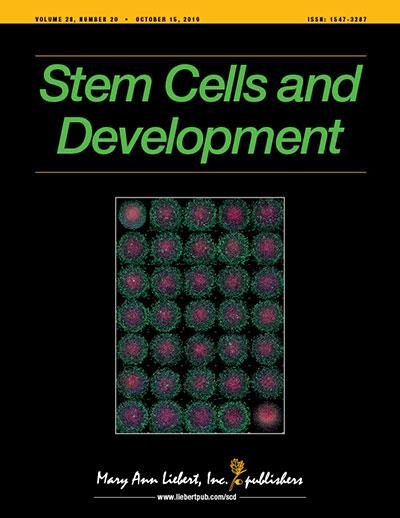
Credit: Mary Ann Liebert, Inc., publishers
New Rochelle, NY, October 17, 2019-Researchers have reported for the first time producing feline induced pluripotent stem cells (fiPSCs) from adult cells of domestic cats. The methods and implications of this research are published in Stem Cells and Development, a peer-reviewed journal from Mary Ann Liebert, Inc., publishers. Click here to read the full-text article for free on the Stem Cells and Development through November 17, 2019.
Luke Dutton, Jayesh Dudhia, Deborah Guest, and David Connolly, Royal Veterinary College, University of London (Herts) and Animal Health Trust (Suffolk), U.K. coauthored the article entitled “Inducing Pluripotency in the Domestic Cat (Felis catus).” The availability of fiPSCs may make it possible to develop cellular models of genetic diseases affecting domestic cats – and similar human disorders – contributing to a better understanding of those diseases and the identification of novel therapeutic approaches. The fiPSCs generated by Dutton et al. were able to differentiate in vitro into cells that represented all three germ layers and produced relevant stem cell markers.
Graham C. Parker, PhD, Editor-in-Chief of Stem Cells and Development and The Carman and Ann Adams Department of Pediatrics, Wayne State University School of Medicine, Detroit, MI states: “Although AAother groups have previously reported derivation of iPSCs from species of wild cats, this is the first characterization of iPSCs from this important companion species.”
###
About the Journal
Stem Cells and Development is an authoritative peer-reviewed journal published 24 times per year in print and online. The Journal is dedicated to communication and objective analysis of developments in the biology, characteristics, and therapeutic utility of stem cells, especially those of the hematopoietic system. A complete table of contents and free sample issue may be viewed on the Stem Cells and Development website.
About the Publisher
Mary Ann Liebert, Inc., publishers is a privately held, fully integrated media company known for establishing authoritative peer-reviewed journals in many promising areas of science and biomedical research, including Cellular Reprogramming, Tissue Engineering, and Human Gene Therapy. Its biotechnology trade magazine, GEN (Genetic Engineering & Biotechnology News), was the first in its field and is today the industry’s most widely read publication worldwide. A complete list of the firm’s 80 journals, books, and newsmagazines is available on the Mary Ann Liebert, Inc., publishers website.
Media Contact
Kathryn Ryan
[email protected]
914-740-2250
Original Source
https:/
Related Journal Article
http://dx.




